I have a special interest in this book. As a young man in the 1980s I’d read Julius Nyerere’s Ujamaa (Swahili for “togetherness”, “unity” or “familyhood”). I was inspired by his vision of a co-operative, non-hierarchical society based on sustainable villages where men and women were equal and people controlled their own destiny without outside interference. I was later excited to read that with Nyerere as president, the whole of rural Tanzania operated in this way. I was unable to find any more details, and so I worked for three years as a gardener during the day and as a waiter at night, saved all my wages, sold my possessions, and in 1990 went to Tanzania to see for myself.

My Experience of the Ujamaa System
I trundled into Dar-es-Salaam on a bus and spent two weeks visiting government departments, pleading with them for permission to visit an ujamaa village, until I was put in a jeep and taken inland, where I spent several weeks in Chanika and Mvuti ujamaa villages. In the evenings I sat on the floor of a hut and ate from a big circular tray with some of the villagers, one of whom went to university in what was then East Germany, and who translated for me. Here’s what they told me:
Out of a population of 24 million, 20 million Tanzanians lived in ujamaa villages. Everyone had their own plots to grow food and keep animals for themselves, but also worked two days per week on collective plots to grow cash crops for sale, to buy things for the village, like a truck, or a mill for grain. The tribes got on well and intermarried, as did Christians and Muslims. Groups of 10 households elected one of their members to sit on the village committee. Each village committee elected one of their members to sit on the district committee, who elected one of their members to sit on the regional committee, who elected one of their members to sit in the national government. That was it — delegates were chosen for their personal qualities by people who knew them well, with no campaigning and only one party — Chama Cha Mapinduzi (Party of the Revolution).

I worked in the fields, played football and drank ngongo with them. I watched them build homes from poles from the forest, mud and thatch; I milked cows for the first time and my vegetarianism lapsed when my host gave me some chicken stew, as I didn’t want to be rude. Everyone looked after everyone else — no mortgages, no money and no insurance required. Plus all food was local and organic, and all animals were free-range, which made me feel better about my dietary lapse.
I left, in love with Nyerere and his idea, but later, back home, I read that the ujamaa experiment had failed in the 80s, and only a few villages remained. The Left blamed the World Bank, who refused the loans that Tanzania needed to buy oil (oil can only be purchased in dollars, but that’s another story) until there were multi-party elections and the ujamaa system was de-linked from government. The Right blamed economic incompetence. There was absolutely nothing that I could find that gave a reliable account of what had really happened in Tanzania.
Here’s more on my original impressions of Ujamaa.

Ralph Ibbott Puts me Straight
So I was very excited by the publication of this book. Selma James, who wrote the introduction, went to interview Ibbott for a book about Tanzania, and discovered his manuscript, which had been in a drawer for 40 years. Ibbott had been involved in the first ujamaa villages, and this was a first-hand account of what happened. It was an amazing revelation to me, as I learnt that everything I believed about the ujamaa system was wrong, and I had been lied to.
In 1960, a young man named Ntimbanjayo Millinga also read Nyerere’s words and was, like me, inspired. He set off with around 14 friends to start to do exactly what Nyerere suggested — to settle the land in co-operative villages, work together and organise themselves, arriving at decisions via consensus rather than by voting. Their wives didn’t join them until later, they had to build everything from scratch, and they had to face lions whilst clearing the land. Ibbott met Millinga after being expelled from what was then apartheid Rhodesia with his wife and children for setting up a mixed-race settlement. In 1963 they joined Litowa — Millinga’s budding village in Ruvuma district in the south of Tanzania. As a foreigner, Ibbott acted as an adviser, but didn’t take part in the decision-making meetings.

The Ruvuma Development Association (RDA) was set up by the villagers, with the aim of spreading Nyerere’s vision of self-organising villages across Tanzania. The most important part of Nyerere’s vision was that villagers must come together and organise themselves, and must never, under any circumstances be organised or controlled from above. The RDA was in effect a co-operative of producer co-operatives. Office-holders of the villages and of the RDA carried out their official duties outside the hours in which they were working the land with everyone else. They struck a fine balance between working to make the villages strong and spreading the ujamaa idea to the rest of Tanzania, but without any suggestion of drawing higher wages or living in classier accommodation than anyone else. This of course was not the case in other government-led development projects in Tanzania.
By the late 1960s the Association comprised 17 villages, including several with over 80 families. They produced all their own food, built good houses of mud-brick and timber, grew tobacco as a cash crop, and had set up schools, clinics, hydraulic ram pumps for water on tap, sawmills, spinning and weaving enterprises, mechanical workshops and a grain mill. Prospective members spent three days in a village and then were sent home to decide whether they wanted to join. If so, they moved their family to a village for a six-month probationary period, during which time they joined in with the work of the village, and after which, if both sides were happy, they were given a plot to build their house.

RDA Versus the Elite
Nyerere said that when he was asked exactly what ujamaa meant, he suggested that they visit the villages of the RDA to find out. However, as the years went by, the RDA attracted the attention of the country’s elite — members of the party’s central committee, regional commissioners, civil servants etc. They saw clearly (and correctly) that their privileged positions would be threatened if this system spread, and national and regional leaders were chosen via a system that reached down to grass-roots in the villages — a system that they were not part of. The thought of losing their jobs to peasant farmers and having to find alternative work — possibly even joining villages and working the land — didn’t appeal at all. They opposed the RDA from the beginning — covertly at first, because the country’s president personally supported the RDA. But RDA officials stated that in private, government officials had told them that they would crush them at some point. Ibbott suggests that another reason for their opposition was the total impossibility of obtaining bribes from the RDA to augment their salaries.
A local government official at one point called together a meeting of RDA officers to try to discredit Millinga, who was working his way up towards national government, saying that he was working for his own benefit and not for the benefit of the villagers. It showed his lack of understanding of how the RDA worked, and of Millinga’s relationship to the villagers. He was one of them — he worked with them, and he built his house from poles and mud in a village, when he was expected to occupy a bigger house in town. The RDA officials told the scheming official to mind his own business. Later the same year, Nyerere wrote a paper for regional commissioners instructing them to spread the RDA concept throughout Tanzania, and that particular commissioner had to implement this policy in Ruvuma. It must have stung. Commissioners and the party retaliated by withdrawing government contracts from RDA businesses such as the timber mill and grain mill.

In 1967, as part of his famous Arusha Declaration, Nyerere limited the amount of wealth that politicians could accumulate. This was no problem at all for members of the RDA — even though by now, Millinga had become an MP. But you can imagine the outrage of the elite, and the intense desire to be rid of the RDA. This they finally achieved in 1969, when parliament voted to disband the association and seize its assets. Nyerere was almost alone in his opposition to this, but he accepted their decision. The only reason the RDA lasted so long was because of Nyerere’s support. At one point he said that if party officials wanted to bully villagers, they would have to shoot him first. As it turned out, they found a way to bully the villagers without shooting the president.
The elite’s excuse for their opposition to the RDA was that organic development was too slow, and so money and effort was pumped into government programmes that forcibly collectivised rural Tanzanians into ujamaa villages that were nothing of the sort. Chanika and Mvuti, the villages that so impressed me in 1990, were part of this programme; but perhaps I was shown the best examples; perhaps I didn’t see what was happening behind the scenes. On the whole, “villagisation” didn’t work well, due to the lack of commitment from members who didn’t want to be there in the first place. Most villages failed to feed themselves, and required government aid to do so.

The Ujamaa Vision is by No Means Dead
Ujamaa is now taken to mean the villagisation programme of the 1970s, after the RDA had been destroyed. In fact that’s the only thing covered by the Wikipedia page on ujamaa – it doesn’t mention the RDA at all. But the RDA was what ujamaa was all about, not the villagisation programme. In fact, in Freedom and Development in 1968, Nyerere had written: “An ujamaa village is a voluntary association of people who decide of their own free will to live together and work together for their common good. They, and no-one else, will make all the decisions about their working and living arrangements”. This was clearly not the case for so-called ujamaa villages after 1969. Ibbott was critical of Nyerere in one respect — his giving away of power to the venal central committee of the party. Ironically, Nyerere was trying to avoid the tyrannical “strong-man” set-up common in other parts of Africa, but in trying to be more democratic, contributed to the destruction of his beloved ujamaa vision.
Imagine if the RDA had survived — if it had spread to involve the whole of rural Tanzania in the same way that the villagisation programme did? Do you think for a second that a real ujamaa system would have been accepted or even allowed by the international community? No, of course not. Any attempt by people to organise themselves in a co-operative, non-hierarchical way, rather than being controlled from above by either the Left or the Right has been demonised and crushed — from the Paris Commune and Makhno’s Free Territory in Ukraine to the CNT in the Spanish Civil War. Those with power have even managed to demonise the name of this kind of organisation — anarchism. They have tried to make an association in people’s minds between anarchism, violence and chaos. As you’re reading this magazine, you probably realise that actually, it means the exact opposite, but most people don’t, which means that the powerful have largely succeeded.

However, what we have now, that none of those groups had, including the Ruvuma Development Association, is the internet. Go online and search for community energy, community-supported agriculture, credit unions, open source, cryptocurrencies, housing co-ops, worker co-ops, mutual societies and intentional communities. There are still plenty of people building co-operative, non-hierarchical alternatives to the elite, corrupt, corporate, profit-motivated, command & control system. You can now find them easily and support them.
The story of Ruvuma’s 17 inspirational villages (one of which still remains as an ujamaa village) can now be spread widely, and Millinga, now dead, can become a hero to a new generation, thanks to this inspirational book by Ibbott (who is still alive and living in Scotland), that was almost never published. My advice is to buy it, read it, give it to someone else and — spread the word.
Re-blogged from The Land Magazine

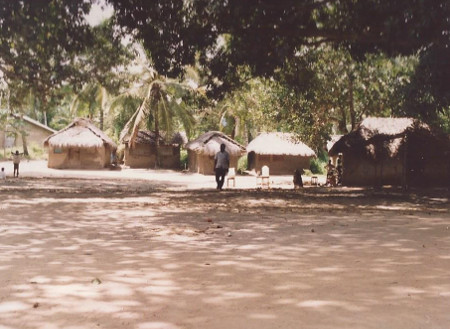

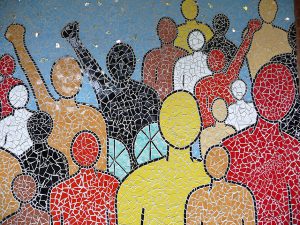
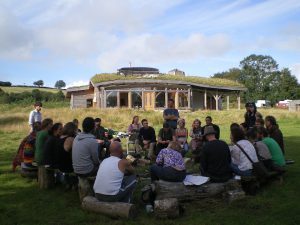


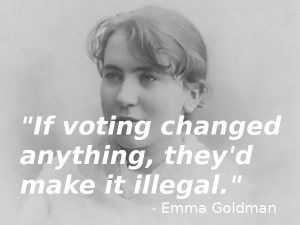
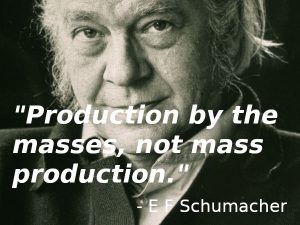
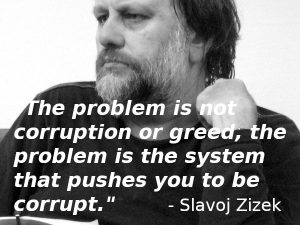
4 Comments
Thanks for narration.
I believe the decision to ban was made at the central committee of the then ruling party TANU. This was a powerful organ of the state party. It was not in the parliament as stated above as President Nyerere was not an MP as this is not in the Tanzanian system. The President appears in the parliament for special occasions only.
The RDA is truly a sad story for the opportunities of rural development in Tanzania. True democratic institutions at village level (grassroots) is still, sadly not practical even today, across many parts of the world if not all.
Thanks for the detail Apollo. It is a sad story indeed. I don’t know if you know, but there is a network of truly democratic institutions at grassroots level in Rojava, in northern Syria – https://www.lowimpact.org/small-key-can-open-large-door-know-whats-happening-rojava/ (currently being attacked by Turkey – as you know, powerful states and corporate interests don’t like experiments with real, grassroots democracy one little bit); plus there’s Mondragon in Spain – https://en.wikipedia.org/wiki/Mondragon_Corporation; and many thousands of small enterprises that are part of the ‘Solidarity Economy’. We’ll be launching a sister site soon to help promote and recruit for the Solidarity Economy.
People usually forget that there are thriving examples of communal agricultural settlements that go back centuries, and particularly to the 16th century Reformation in Germany. The Hutterites of Western Canada, for example, are highly successful and employ cutting edge technology in their agricultural practices.
Would be nice to read more on all those efforts of the 16th century Reformation in Germany and the Hutterites of Western Canada. Will check further but feel free to share any first point references you may want to recommend. It will be of interest to explore why others prosper and others fail …